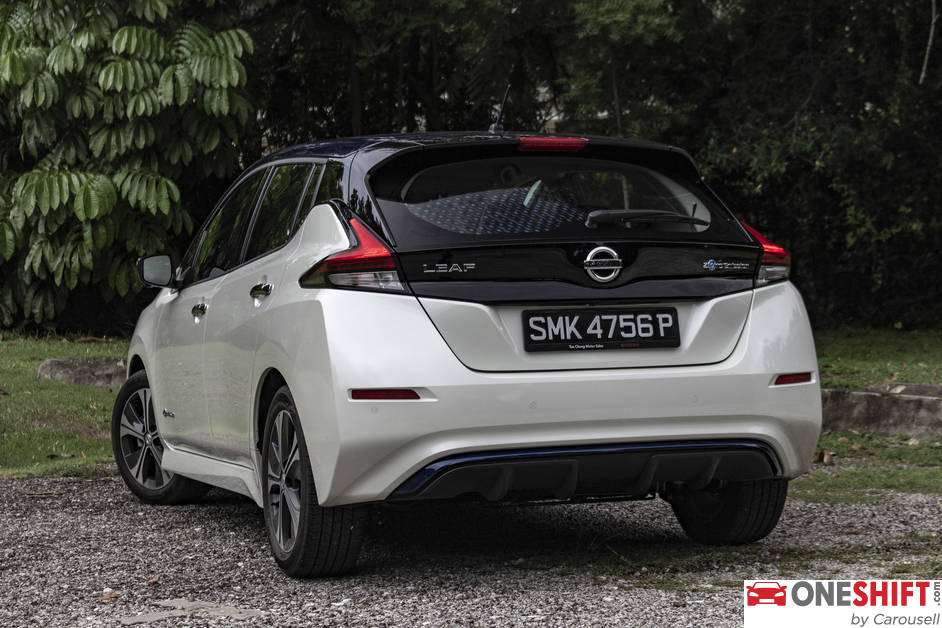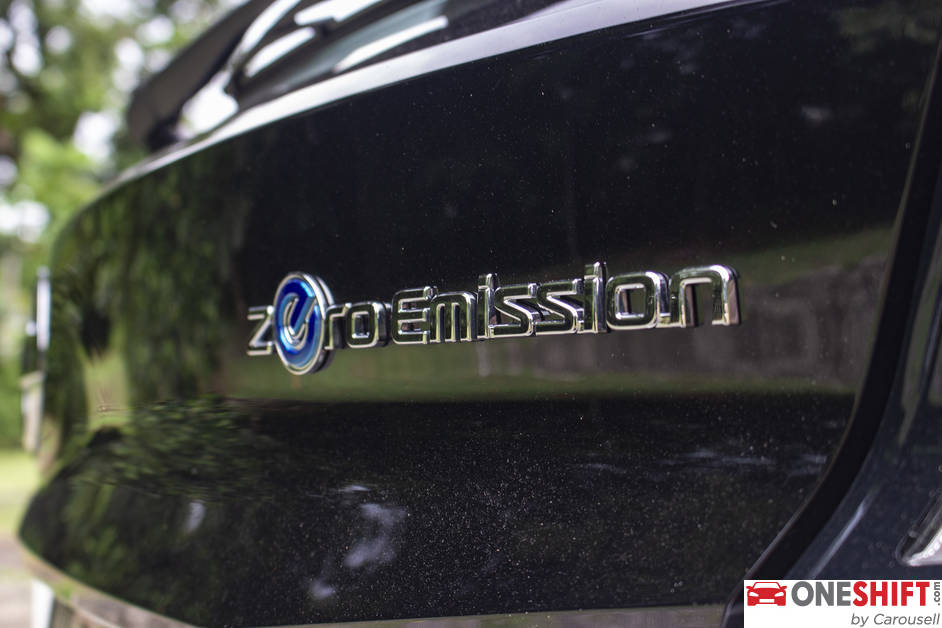Green Leafy Goodness
Electric Vehicles (EV) have recently become the buzzword among manufacturers. Nissan on the other hand had been at it for a while; and in-fact we are already test driving the second generation Leaf.


Electric Vehicles (EV) have recently become the buzzword among manufacturers. Nissan on the other hand had been at it for a while; and in-fact we are already test driving the second generation Leaf.

Nissan has taken a leaf (pun intended) from their previous design and have delivered again, a hatchback. This time round however, the Leaf is actually good to look at, with edgy styling which has taken over the previous car’s lumpy design. Its sharper head and ‘L-shaped’ tail light complements purposeful creases on the bodywork.

The new car also features an attractive dual-tone paint job, and they have kept the charging port under a hatch on the hood, similar to the first generation Leaf.
There is that typical “Nissan-ness”, with good tactile quality of surfaces, and seats which are comfortable… great especially on journeys where you would clock considerable distance.

The blue accented theme, which dots the exterior is also mirrored inside, seen with its double stitched dash work, and seat lining.
Strangely enough, the steering wheel adjusts only for tilt and not for reach, and would prove to compromise on finding that perfect driving position.

Heated front seats are also a no-no in our tropical climate, but then again, EVs here will at least for now be sold in small numbers; and like other brands, Nissan’s entry also carries with it equipment which will better suit larger markets.
This aside, the interior is a pleasant place to be in. Accomodation for rear passengers is good, thanks to its 2,646mm wheelbase.

With 435 litres, cargo room is more-than decent, and rear seats fold in 60:40 fashion for added carrying capacity. There is however a kerb between the actual boot and folded rear seats (thanks to the battery), which could make loading longer, more fragile items a challenge.
Hit the ‘Start’ button, and you are good to go…. That is one of the biggest advantages an EV has over a fossil fuel-burning car.

The drive shifter, which resembles an 8-ball is easy to get used to, and a shift right and back, places the car into ‘Drive’.
Acceleration, like most current EVs is brisk. 320Nm (26% more than the previous car) of torque does plenty for immediate acceleration, which is great especially during non-rush hour junction-to-junction driving. The advantage is most evident off-the-line, compared to a regular car which will require time for the engine to build pace. The benchmark 100km/h yardstick is done in 7.9 seconds, and in near-silence.

Driven without its regenerative braking on, the Leaf can coast and cruise with little effort from the throttle, ideal along stretches which requires very little deceleration.
While it does accelerate quickly, the Leaf is intended to be driven in a relaxed manner. Its soft-tuned suspension soaks up the bumps with ease, and some good insulation ensures that road noise is kept at bay. Surprisingly, body roll around the bends is quite minimal, and is also helped by sufficient grip from those skinny tyres, unless you are one of those heavy footed drivers (me).

Nissan has also introduced their e-Pedal, where at a flick of a switch, allows you to operate the car with only the accelerator pedal. Not only does the regenerative braking activate whenever you reduce your throttle, the brakes also bite when you lift off. While it does take some time getting used to, and goes against the grain of how we are already wired to drive; the e-Pedal is quite ideal for situations when you are faced with start-stop situations. You can still depress brake on your own, if the need arises, and as a safety net, the Leaf is also able to brake autonomously during an emergency.

With a maximum range of 260km, there is enough juice, even for daily high mileage users, as long as you have access to a wallbox to charge your vehicle. Its battery holds up to 40kWh of energy, 10kWh more than the one in the previous Leaf. Quick charging with DC current can be done in approximately an hour, utilising the Leaf’s Japanese CHAdeMO type socket. Type 2 AC current charging, on the other hand, takes approximately 6 hours, but prolongs battery life. Well the car will be parked for more than the latter duration of time on most days, therefore the latter is usually all you need.

The Korean brands have been aggressively fielding their own stable of compact EVs more recently, meaning consumers now have more choices, if they plan to go down the EV road.

Cars like the Hyundai Ioniq Electric are slightly more affordable, but the Leaf does feel just slightly more refined, and its unique styling does set it apart from that ubiquitous Private Hire body shape.

Credits:







- Convenient and Hassle-Free
- Consumer Protection
Transparent Process
With No Obligation


Get the Best Price for your used car
from 500+ dealers in 24 hours








